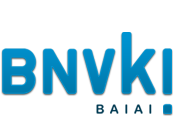Computational Linguistics in the Netherlands (CLIN) 2012
by: Menno van Zaanen <M.M.vanZaanen@uvt.nl>
On 20 January 2012 the 22nd Computational Linguistics in the Netherlands (CLIN) conference took place. This is a yearly conference for researchers working in the field of computational linguistics in the Netherlands, Belgium and surrounding countries. This year, the conference took place in Tilburg, the Netherlands. CLIN was organized by Matje van de Camp, Roser Morante, Martin Reynaert, Menno van Zaanen and Kalliopi Zervanou, who are (guest)researchers of the Tilburg Center for Creative Computing (TiCC), which is part of the School of Humanities of Tilburg University.
This year’s CLIN had 105 attendants, which were mostly people from the Netherlands and Belgium, but also people from France, Ireland, South Africa, Italy, Portugal, Germany, United Kingdom and South Korea attended.
The conference consisted of 14 parallel sessions divided over three parts. Additionally, a plenary session by an invited speaker, a poster session and a session by the sponsors completed the day. The first part of the day consisted of five parallel sessions: parsing and
grammar, machine learning, semantics, new media, and the TT-NWW project.
After the firs part of the day, the official opening of the conference took place. This was followed by a presentation of the invited speaker. Marco Baroni is a researcher in the CLIC group of the Center for Mind/Brain Sciences of the University of Trento, Italy. In his
presentation: “Distributional semantics in the phrasal and sentential domains: How and why”, he provided an overview of different approaches in formal semantics and compared these against computational approaches that are based on corpus-based distributions of words in context. Next, Marco described possibilities of combining the two
approaches.
During the lunch, the poster session took place in the foyer. Eighteen posters were presented on various topics. The lunch and poster session were followed by a session with three presentations by sponsors. These topics of these presentations were the automatic
assignment of keywords to texts, searching in several sources of linguistic information, and an overview of the SoNaR corpus.
The second part of the day consisted of five parallel sessions: spelling, discourse, semantic annotation, text classification and text generation. These sessions consisted of in total 14 presentations.
After a coffee break, the last part of the day, consisting of four parallel sessions took place: multi-linguality, event recognition, learning, and corpus. The conference concluded with a reception.
